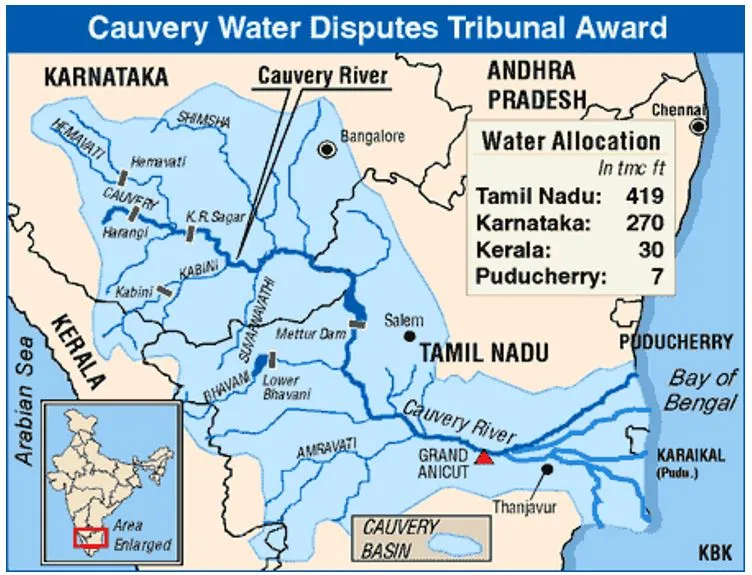

24th January 2025 (12 Topics)
Mains Issues
Context
Chennai’s Chief Minister, M.K. Stalin, recently announced that the Iron Age in India began in Tamil Nadu, over 5,300 years ago, during the early 4th millennium BCE. This claim is backed by recent archaeological findings from the Tamil Nadu Archaeology Department. The discoveries suggest that the use of iron and iron-smelting technology in South India predates many established dates of iron usage elsewhere, including in the Indus Valley Civilisation.
Key Highlights
- Discovery of Iron Use in Tamil Nadu: Archaeological findings, supported by radiocarbon dating, reveal that iron was used in Tamil Nadu as early as 3345 BCE. This discovery suggests that the Iron Age in South India began much earlier than previously thought.
- The results confirmed that iron was introduced to South India in the 4th millennium BCE.
- Till now, it is believed that the Iron Age began in the Middle East and South-eastern Europe around 1,200 BCE – that is roughly 3,200 years ago.
- Iron Objects Found: Excavations at sites like Sivagalai (Thoothukudi district) revealed over 85 iron objects, such as axes, knives, chisels, and swords, suggesting a sophisticated early use of iron tools and weapons.
- These findings rewrite the history of India, showing that Tamil Nadu is the cradle of early iron technology. This highlights the cultural and technological advancements of ancient Tamil societies.
- Key Sites
- Sivagalai (Thoothukudi): Excavations at this burial site revealed over 85 iron objects, including weapons and tools. The radiocarbon dating of charcoal and paddy samples from the site confirmed the presence of iron as early as 3345 BCE.
- Adichanallur (Thoothukudi): Another important site, where charcoal samples in association with iron objects were dated to around 2500 BCE, further confirming the early introduction of iron in Tamil Nadu.
- Mayiladumparai (Krishnagiri): This site revealed cultural items dating from the Microlithic to the Late Medieval period, with iron tools and other relics, helping trace the introduction of iron to the 2nd millennium BCE.
What is the Iron Age (1200 BCE and 600 BCE)?
- The Iron Age was a significant period in human history, occurring between 1200 BCE and 600 BCE, depending on the region.
- It began around 1200 BCE in the Mediterranean and Near East, when several major Bronze Age civilizations, like the Mycenaeans in Greece and the Hittites in Turkey, collapsed.
- It followed the Stone Age and Bronze Age.
- It was defined by the widespread use of iron and steel to create tools and weapons.
- In many parts of Europe, Asia, and Africa, societies moved from using bronze to iron, which was stronger and more abundant. However, some civilizations, such as Ancient Greece, experienced a cultural decline during this transition.
- Iron Age Timeline and Key Features
- Decline of the Bronze Age: The collapse of these civilizations is still debated, but theories include droughts, earthquakes, famine, invasions and disruption in trade routes by nomadic tribes.
- End of the Iron Age: The Iron Age typically ended around 550 BCE, with the rise of writing and recorded history, but this date can vary by region. For example, in Scandinavia, it continued until around 800 CE, marked by the rise of the Vikings. In Western and Central Europe, it ended around the 1st century BCE, coinciding with the Roman conquests.
Division of Iron Age
|


Mains Issues
Context
India’s digital economy is expected to grow almost twice as fast as the overall economy, contributing nearly one-fifth of national income or gross domestic product (GDP) by 2030, according to the ministry of electronics and information technology (MeitY).
Key-highlights
- Current Situation (2022–2023)
- Share in National Income: India’s digital economy constituted 74% of the national income in 2022–2023.
- Gross Value Added (GVA): The digital economy in 2022–2023 was valued at approximately Rs 28.94 lakh crore (~USD 368 billion).
- GDP Contribution: It contributed around Rs 31.64 lakh crore (~USD 402 billion) to India’s GDP.
- Forecast for 2024–2025: The digital economy is expected to grow twice as fast as the rest of the national economy. It will rise to 13.42% of India’s national income by the end of 2024–2025, up from 11.74% in 2022–2023.
- Projection for 2030: By 2030, India’s digital economy will account for nearly 20% of the country’s overall GDP.
- Key Digital Economy Sectors
- ICT Sector: Information & Communications Technology (ICT) firms, telecom, and electronics manufacturing contribute the largest portion, making up 83% of national GVA.
- Big Tech & Online Intermediaries: These contribute 2% of national GVA.
- BFSI, Trade, & Education: Collectively, these sectors also contribute 2% to national GVA.
- E-Commerce and Digital-Only Services: E-Commerce and digital-only firms contribute a limited share of the digital economy:
- E-tailers contribute about 3% to GVA.
- However, BFSI digital activities contribute four times that amount.
Challenges to Digital India
While Digital India has made significant strides, it faces several key challenges:
- Digital Divide: Internet penetration is only 5%, leaving 675 million people unconnected, especially in rural areas. Additionally, 53% of rural households and 75% of urban households are dissatisfied with broadband speed.
- Digital Literacy: Around 40% of people aged 15+ haven't accessed the internet in the past year due to lack of awareness and affordability. This limits the ability of many citizens to benefit from digital services.
- Trade Barriers: Issues like data localization, restrictions on foreign satellite services, import curbs on IT hardware, and domestic production requirements pose barriers for foreign companies.
- Tariffs & Market Access: India applies high customs duties on ICT goods and has some of the highest tariffs within the G20, affecting competitiveness. Additionally, India’s public procurement policies prioritize local suppliers.
- Privacy and Data Security: As digital usage grows, concerns around data privacy and cybersecurity Despite the Personal Data Protection Bill, fears of data breaches and insufficient protection persist.
- Rising Cyber Threats:The integration of generative AI into various sectors has led to a surge in cyberattacks, with phishing incidents and credential phishing witnessing exponential increases since 2022, highlighting the growing sophistication of cyber threats.
Key Aspects of India's Digital Infrastructure
|


Prelims Articles
Context
The Union Ministry of Mines announced the cancellation of the auction for the tungsten mineral block in Nayakkarpatti, Madurai district, Tamil Nadu. This move came after strong opposition from the local community due to the inclusion of the Arittapatti biodiversity heritage site, which is known for its ecological significance.
About Tungsten
- Tungsten is a rare, valuable metal that plays a critical role in industries like aerospace, automotive, construction, and electronics.
- Key Properties:
- Tungsten has the highest melting point of any metal (3,422°C) and is resistant to acids at normal temperatures.
- It also exhibits good corrosion resistance, high thermal and electrical conductivity, and can be drawn into thin wires due to its ductility and tensile strength.
- Primary Sources: Tungsten is extracted from minerals such as scheelite (Calcium tungstate) and wolframite (a mixture of ferrous and manganous tungstate), which are generally found in hydrothermal deposits.
- Mining Methods: The two main ways of mining tungsten are: Underground mining and Open-pit mining
- Strategic Importance: Tungsten is one of the ‘30 critical minerals’ identified by the Indian government for its importance in various strategic and industrial applications.
- Others are:Antimony, Beryllium, Bismuth, Cobalt, Copper, Gallium, Germanium, Graphite, Hafnium, Indium, Lithium, Molybdenum, Niobium, Nickel, PGE, Phosphorous, Potash, REE, Rhenium, Silicon, Strontium, Tantalum, Tellurium, Tin, Titanium, Vanadium, Zirconium, Selenium and Cadmium.
Arittapatti biodiversity heritage site
|


Prelims Articles
Context
The Indian Navy’s INS Sarvekshak has successfully completed the final phase of a hydrographic survey of Mauritius, covering more than 25,000 square nautical miles.
Key Details:
- The hydrographic survey and associated activities align with India’s SAGAR (Security and Growth for All in the Region) vision.
- The hydrographic survey covered a vast area, contributing to the creation of a new nautical chart for Mauritius.
- This chart will assist Mauritius in better planning and developing its maritime infrastructure, managing resources, and planning coastal development.
Maritime Defence Cooperation:
- Mauritius and India share strong defence cooperation, with Mauritius having an International Liaison Officer at India’s Information Fusion Centre for Indian Ocean Region (IFC-IOR) in Gurugram.
- India also supports Mauritius with radar surveillance systems and has provided them with Advanced Light Helicopters (ALH) and a Dornier Do-228 aircraft, both built by Hindustan Aeronautics Limited (HAL).
- Apart from being a significant partner in the SAGAR Vision, Mauritius is an important part of India’s “Neighborhood First Policy” and Africa Forward Initiative.
- It was the first African nation to sign a Comprehensive Economic Cooperation and Partnership Agreement(CECPA) with India.
SAGAR (Security and Growth for All in the Region)
|


Prelims Articles
Context
The Supreme Court of India recently disposed of an application from Karnataka, which sought an injunction to prevent Tamil Nadu from proceeding with the Cauvery-South Vellar Link Project. The Court noted that, as of now, Tamil Nadu has not received the necessary approval from the Union government to move forward with the project.
About Cauvery-South Vellar Link Project
- The Cauvery-South Vellar Link project is a proposed irrigation and water transfer initiative put forward by Tamil Nadu.
- It aims to transfer excess floodwater from the Cauvery River (Mettur Dam) in Tamil Nadu to the South Vellar River, thereby providing water to the Sarabanga basin in Salem district, which faces water scarcity.
- This project is part of Tamil Nadu’s broader strategy to improve irrigation and water management in its drought-prone regions.
- Water Transfer: The project would involve the diversion of excess water (about 483 TMCft) that flows across the inter-State border near Biligundlu in Karnataka, to Tamil Nadu.
- Karnataka’s Opposition:
- Karnataka has raised concerns that this project would lead to the appropriation of its Cauvery water. The state argues that it has a right to the water, particularly after the Cauvery Water Disputes Tribunal’s 2007 decision and the Supreme Court’s 2018 verdict regarding water sharing.
- Karnataka fears that the project would interfere with its own water rights and hurt the interests of its people who depend on the Cauvery water for drinking and irrigation.
Fact Box:Cauvery River
|


Prelims Articles
Context
The rise of memecoins, especially with figures like Donald Trump launching his own, has sparked a lot of discussion about their legitimacy, risks, and potential impact on the broader cryptocurrency market.
What is a Memecoin?
- Memecoin is a type of cryptocurrency often created as a joke or to capitalize on viral internet memes.
- Unlike more established cryptocurrencies like Bitcoin or Ethereum, memecoins typically don't have inherent value or strong use cases, but their worth often comes from community hype, influencer backing, and speculative trading.
- Memecoins are easy to create, and platforms like Pump.fun allow anyone to launch their own coin with little to no technical expertise.
- Why Are Memecoins Risky? While some memecoins, like Dogecoin, have achieved massive success, their value is largely dependent on public interest and speculative buying, making them incredibly risky.
- Memecoins are also prime targets for frauds like "pump-and-dump" schemes and "rug pulls"—fraudulent activities where creators suddenly withdraw liquidity, rendering investors’ holdings worthless.
Fact Box:Cryptocurrency
|


Prelims Articles
Context
In a groundbreaking move, the Odisha government has approved a plan to directly allocate funds to villages located in forested regions for the protection and management of forests. This initiative is part of the implementation of the Forest Rights Act (FRA) and aims to empower local communities to take charge of their forest resources.
What is the Community Forest Resource (CFR) Plan?
- The CFR plan is a framework under the Forest Rights Act (FRA) that gives communities the legal right to protect, manage, and conserve the forest resources on lands they traditionally use.
- These plans are developed by local gram sabhas (village councils) and involve tree plantation, forest protection, and management of minor forest produce.
- Odisha ranks third in the country in the number of villages granted Community Forest Resource Rights (CFRR).
- As of August 2024, 3,659 villages in Odisha have received CFRR titles.
- Maharashtra and Chhattisgarh are leading in CFRR implementation, but Odisha’s new initiative is expected to further strengthen its position.
Fact Box:Forest Cover (India State of Forest Report 2023)
|


Prelims Articles
Context
Rhodamine B, a synthetic dye primarily used in textiles and scientific research, has recently gained attention due to its illegal use in food products, raising significant health concerns.
What is Rhodamine B?
- Rhodamine B is a synthetic dye primarily used in textiles, paper, and leather. It is bright pink in color and also used in scientific research due to its fluorescent properties.
- However, it is dangerous when used in food products, as studies have linked it to DNA damage and potential cancer risks.
- Health Risks:
- Rhodamine B is carcinogenic, meaning it can potentially cause cancer, particularly with prolonged exposure.
- Animal studies have shown that it can cause tumor growth in organs like the liver and bladder.
- It is prohibited in food products in many countries, including the United States and European Union, due to these risks.


Prelims Articles
Context
India is set to operate its first human underwater submersible as part of the Deep Ocean Mission. The submersible will initially dive to a depth of 500 meters this year, with plans to reach 6,000 meters by the next year. This mission is a significant step towards advancing India's scientific, technological, and environmental goals.
What is the Deep Ocean Mission?
- The mission aims to explore and utilize the deep-sea ecosystem for its vast resources. These include critical minerals, rare metals, and undiscovered marine biodiversity, all of which are vital for India's economic growth and environmental sustainability.
- Key Objectives of the Mission:
- Unlock Resources: It will help in discovering valuable underwater resources, such as rare metals, which are crucial for future industries.
- Promote Blue Economy: The mission is focused on developing a blue economy, which involves the sustainable use of ocean resources to boost economic growth.
- Enhance Scientific Understanding: By studying deep-sea ecosystems, the mission aims to aid in sustainable fisheries and biodiversity conservation.
- Self-Reliant Technology: The submersible and other equipment for the mission are developed indigenously in India, demonstrating the country’s self-reliance in cutting-edge technology.
- Impact: This mission is aligned with India’s broader goals, such as the Gaganyaan space mission, marking India’s progress in both space and ocean exploration. By tapping into underwater resources, India aims to secure long-term benefits for its economy, scientific community, and environmental resilience.
Fact Box:What is Deep Ocean Mission?
|


Editorials
Context
The United States, under President Donald Trump, announced its decision to withdraw from the World Health Organization (WHO), accusing it of bias, particularly towards China, and mishandling the COVID-19 pandemic. This decision, along with halting financial contributions, raised serious concerns about the future of global health collaboration and the impact on essential health programmes worldwide.
Impact of U.S. Withdrawal
- Financial Consequences: The U.S. is the largest financial contributor to WHO, providing around 18% of its budget. A withdrawal of funding would significantly disrupt WHO's global health programmes, including efforts in HIV/AIDS, tuberculosis, and the fight against infectious diseases.
- Global Health Programs at Risk: WHO plays a crucial role in ensuring equitable access to life-saving drugs, improving healthcare infrastructure, and preventing global disease outbreaks. The loss of U.S. funding could derail critical health interventions, especially in low- and middle-income countries.
- Lessons from the COVID-19 Pandemic: The pandemic has reinforced the importance of global collaboration in combating health crises. Isolating a country from WHO's efforts would undermine the essential principle that no nation is safe until all are safe, and collective action and information sharing are key to preventing pandemics.
Response from the Global Health Community
- WHO’s Appeal for Reconsideration: WHO has reached out to the U.S., urging reconsideration of its decision, emphasizing the importance of multilateral cooperation in global health.
- Consequences of Withdrawal: While Trump’s decision may be rooted in political considerations, the global health community views this as short-sighted. It risks hindering efforts to tackle global health challenges through collective action, which is increasingly vital in the age of pandemics.
- Hope for Re-engagement: Despite the strong stance taken by the U.S. government, there is hope that a change of heart will occur, given the unprecedented nature of global health crises and the need for cooperation in addressing future pandemics.
Practice Question
Q. Assess the potential consequences of the United States' decision to withdraw from the World Health Organization (WHO) on global health programs and international cooperation. What should be done to address the challenges posed by this move?


Editorials
Context
The 75th anniversary of the Election Commission of India (ECI) is marked on January 25, celebrated as National Voters Day. However, recent issues with voter registration in the Maharashtra State elections have raised concerns about the accuracy and integrity of electoral rolls. The rapid increase in voter registrations has prompted discussions on how to improve the credibility of voter data in the country.
Issues with Electoral Rolls in Maharashtra
- Discrepancy in Voter Numbers: In the 2024 Maharashtra State elections, the ECI enrolled 9.7 crore voters, exceeding the state's total estimated adult population of 9.54 crore, raising doubts about the authenticity of the voter list.
- Rapid Enrollment of New Voters: A significant surge of 48 lakh new voters were registered in just six months between the Lok Sabha and State elections, a sharp increase compared to previous years, leading to concerns about the validity of these enrollments.
- Uneven Voting Patterns: The sudden addition of new voters seems to coincide with a notable shift in voting patterns. This raises questions about the transparency and accuracy of voter enrollment and its possible impact on election outcomes.
Transparency and Electoral Integrity
- Lack of Data Transparency: The ECI has not publicly released detailed data about the newly registered voters, leaving unanswered questions regarding their legitimacy and how they were verified.
- Need for Clear Verification Mechanisms: To ensure the integrity of the electoral rolls, there is a need for more robust verification processes during voter registration. This would help eliminate potential errors and fraudulent registrations.
- Role of Technology in Ensuring Accuracy: The integration of technologies like Aadhaar for biometric verification of voters could help improve the accuracy of electoral rolls and minimize the chances of discrepancies or duplication.
Practice Question
Q. Discuss the concerns regarding the accuracy and integrity of electoral rolls in India. What measures can be implemented to ensure the credibility of voter registration data?


Editorials
Context
India remains at the forefront of the global tuberculosis (TB) burden, with significant challenges in managing the disease, especially amid the COVID-19 pandemic. Despite India's ambitious goals to eliminate TB by 2025, the country continues to grapple with issues like drug-resistant TB (DR-TB), inadequate healthcare infrastructure, and gaps in the implementation of the National Tuberculosis Elimination Programme (NTEP).
Challenges in TB Management
- Vulnerable Groups at High Risk: High-risk groups, including those working in mines and stone carving, migrants, and people with underlying conditions like diabetes, are at an increased risk of contracting TB. Lack of access to healthcare further exacerbates their situation.
- Treatment Supply Chain Issues: Despite a well-established drug supply system, a nationwide disruption in 2023 has led to shortages of essential TB drugs, affecting treatment adherence and increasing the risk of drug resistance.
- Extrapulmonary TB: Extrapulmonary TB (EP-TB), which affects organs other than the lungs, often goes undiagnosed due to vague symptoms, delayed diagnosis, and reliance on expensive tests, leading to advanced disease progression.
Implementation Challenges and Solutions
- Need for Trained Healthcare Providers: There is a significant shortage of trained healthcare workers in both government and private sectors, hindering the timely diagnosis and treatment of TB. Improvements in training and sensitization of frontline workers are essential.
- Technological Gaps in Diagnosis: While molecular diagnostic tests like CBNAAT and Truenat are available, logistical issues such as the absence of trained lab technicians and shortages of test cartridges delay results, impacting timely treatment initiation.
- Community Participation and Local Solutions: Successful interventions, like Kerala's collaboration with Kudumbashree, highlight the importance of community involvement and political leadership in driving TB elimination efforts. This approach can be adopted across different regions for effective TB control.
Practice Question
Q. Evaluate the effectiveness of India’s National Tuberculosis Elimination Programme (NTEP) in addressing the challenges of TB management. Suggest measures to improve the implementation of the programme and achieve the target of TB elimination by 2025.




